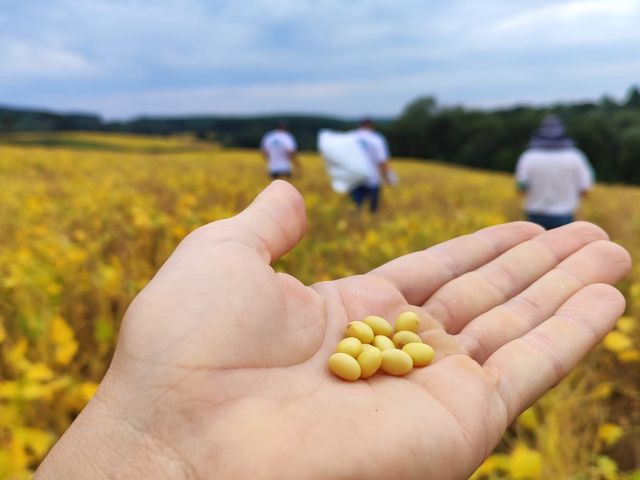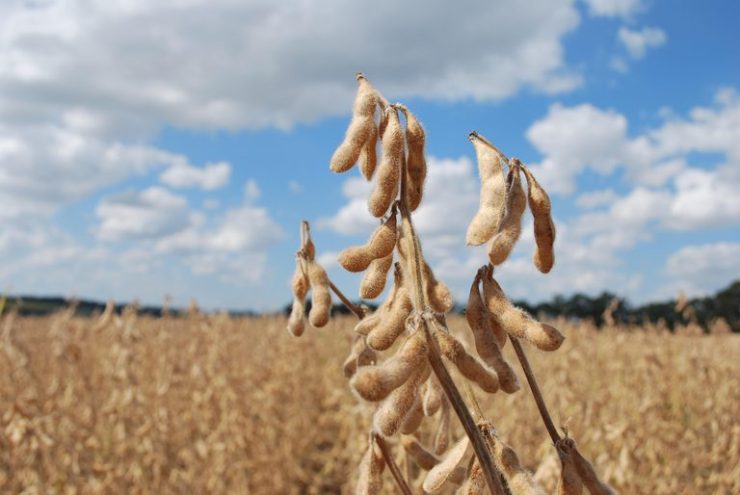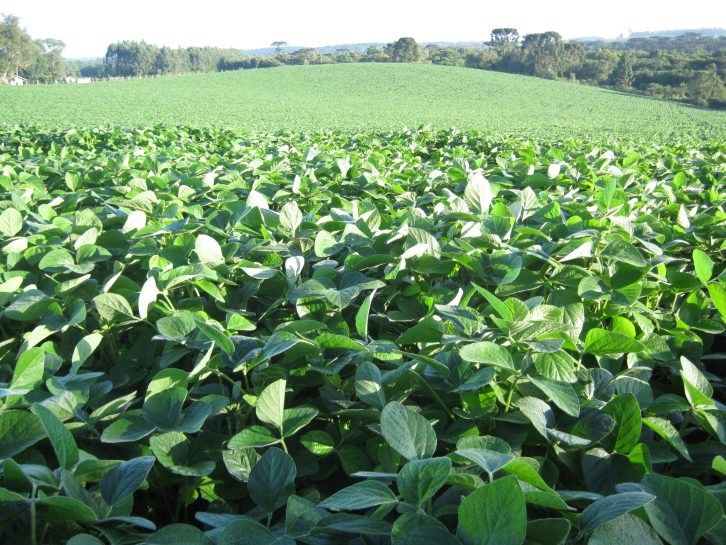Embrapa and Fundação Meridional have just launched two soybean cultivars (BRS 1075IPRO and BRS 774RR) that stand out for their high production potential, resistance/tolerance to major diseases, among other features. “We are launching two very promising soybean cultivars for the Central-West region, one of Brazil’s productive hubs,” emphasizes Alexandre Nepomuceno, general manager of Embrapa Soja (PR).
BRS 1075IPRO is a transgenic cultivar with “Intacta RR2PRO” technology. This characteristic confers tolerance to the herbicide glyphosate, which facilitates weed control, and resistance to some caterpillars that attack soybean crops, such as Anticarsia gemmatalis and Chrysodeixis includens, for example.
According to Embrapa researcher Carlos Lásaro Melo, this material proved to be quite competitive, as it has high productivity, with yields above 7% when compared to the cultivars most used in the regions of indication. In the tests, the new cultivar demonstrated high productive stability, good resistance to lodging, in addition to leaf and root health. “It is an option that allows early planting of soybeans, enabling its insertion in the rotation or succession system with other crops”, explains Melo.
Another highlight of BRS 1075IPRO is its high health. In field and greenhouse tests, the cultivar showed resistance to the main soybean diseases such as stem canker, bacterial pustule, stem necrosis virus and Phytophthora root rot. In addition, it is moderately resistant to frogeye leaf spot. BRS 1075IPRO will benefit producers in the indicated regions: Goiás (RECs 301, 303 and 401), Mato Grosso do Sul (REC 301), Mato Grosso (RECs 401 and 402), and Rondônia (REC 402).
 BRS 774RR soybean is a transgenic cultivar with resistance to glyphosate, which makes it easier to manage weeds. “It achieved an average gain of 4.2% in productivity compared to other materials in the region, and with a large share of the area cultivated with soybeans,” Melo emphasizes.
BRS 774RR soybean is a transgenic cultivar with resistance to glyphosate, which makes it easier to manage weeds. “It achieved an average gain of 4.2% in productivity compared to other materials in the region, and with a large share of the area cultivated with soybeans,” Melo emphasizes.
It also has the advantage of allowing a wide sowing window and stability in the adaptation region. “It is a soybean cultivar option for those who want early and profitable planting in areas of high fertility, enabling its insertion in the rotation system or succession with other crops”, explains the researcher.
Regarding health, in field and greenhouse evaluation tests, it showed resistance to stem canker, brown stem rot and Phytophthora root rot and cyst nematode (Race 3). The cultivar also showed moderate resistance to bacterial pustule, frogeye leaf spot and the root-knot nematode Meloidogyne javanica.
According to Melo, the BRS 774RR stands out for its excellent plant architecture and production stability in the adaptation region. The BRS 774RR will serve producers in some edaphoclimatic regions of Goiás (RECs 301, 303, 304 and 401), Mato Grosso (RECs 401 and 402), Mato Grosso do Sul (REC 301), Rondônia (REC 402) and Minas Gerais (RECs 303 and 304).
Suitable for refuge areas
Another advantage of BRS 774RR is that it can be used in refuge areas of crops that grow cultivars with Intacta IPRO technology (cultivars with resistance to glyphosate and a protein – Cry1Ac – that confers resistance to some caterpillars), and Intacta2 Xtend (I2X) combines three proteins (Cry1A.105 and Cry2Ab2 and Cry1Ac), which provides protection against six species of caterpillars that affect soybean crops: Helicoverpa armigera, Spodoptera cosmioides, false looper (Chrysodeixis includens), soybean caterpillar (Anticarsia gemmatalis), apple caterpillar (Chloridea virescens) and axil borer (Crocidosema aporema). In addition, it combines tolerance to the herbicides glyphosate and dicamba.
The current recommendation for refuge for soybean crops is at least 20% of the area with technology other than Intacta IPRO and I2X. According to researcher Daniel Sosa Gomez, this is a preventive measure that consists of planting part of the crop with other non-Bt soybean options (without the Bacillus thuringiensis (Bt) toxin – at a maximum distance of 800 meters from crops).
“The adoption of refuge areas allows for the random mating of moths originating from the refuge areas, favoring the maintenance of susceptible populations and delaying the selection of resistant populations,” he explains. Embrapa also advocates that pest management in crops should follow the same premises as Integrated Pest Management (IPM).
“In 50 years of operation, Embrapa Soja has been delivering new cultivars every year with increasing productivity ceilings, in addition to stability and health so that Brazilian producers have the most advanced technologies embedded in their seeds,” summarizes Nepomuceno.




